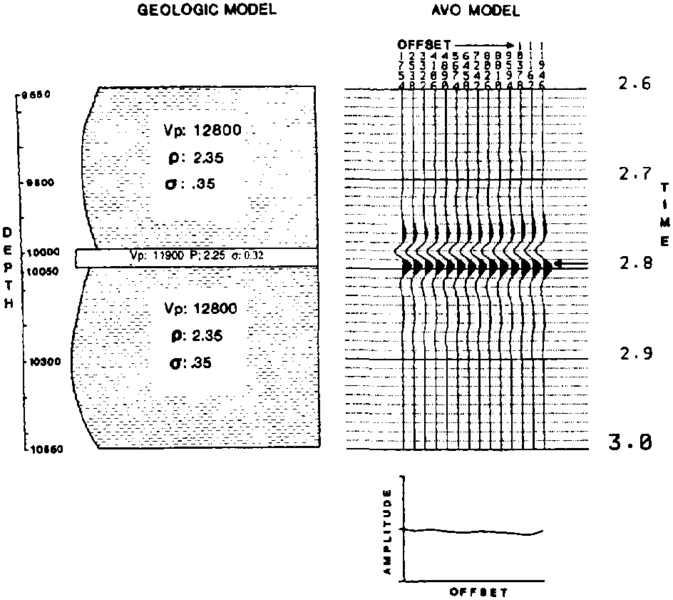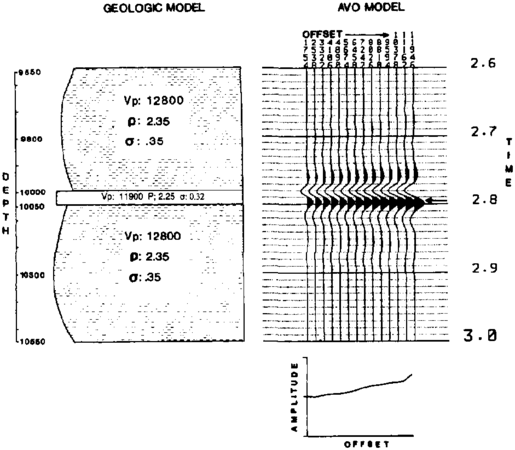AVO stands for Amplitude Versus Offset, it gives the relationship between the seismic reflection coefficient at a point based on different distances between the source and receivers. AVO analysis can be used to know more about the rock properties.
Theory
Reflectivity coefficient when a wave travels from one medium to another is given by:
and
are the acoustic impedances of the two mediums. However, we do not account for reflectivity coefficient for waves that travel at an angle to the surface. As the angle of incidence increases, it was noticed that the Reflectivity coefficient increased until the critical angle. This happens due to something called the ‘energy partitioning’. An incoming p-wave splits to reflected and transmitted waves. If the angle of incidence is non-zero, it splits further to P and S components depending on the difference in materials. Ostrander was the first to introduce a practical application of the Amplitude versus Offset effect, showing that a gas sand underlying a shale exhibited amplitude variation with offset.
Mathematical
Zoeppritz equation
RP, RS, TP, and TS, are the reflected P, reflected S, transmitted P, and transmitted S-wave amplitude coefficients, respectively, =angle of incidence,
=angle of the transmitted P-wave,
=angle of reflected S-wave and
=angle of the transmitted S-wave.
Shuey
As Zoeppritz equation gave no further intuitive explanation to this behaviour, Shuey (with inspiration from Ostrander’s work) explained the angular dependance of the refection coefficient using the Poisson’s ratio (in case of the shear wave terms, for acoustic term it only depends on the impedance and the angle of reflection). We have a 3-term Shuey equation:
where,
- and
- ;
R(0) is the reflectivity coefficient for normal incidence. G is the AVO gradient, that gives the relation of reflection coefficient with different offset and F describes behaviour at large angles, closer to critical angles. If we make the incidence angle smaller than 30 degrees, the third term approaches 0, making this equation simpler to a 2-term Shuey approximation. If we ignore the S wave conversion and keep it to P-P waves, it becomes even simpler:
Use and interpretation
AVO crossplots
These are used to plot the relationship between the different amplitudes in a common image gather to give the gradient. Instead of averaging via stacking, this helps to get more information about the rock properties. Ideally the amplitude decreases with increase in offset, because of geometrical spreading. However, AVO anomaly is seen where the amplitude increases with increasing offset due to a softer layer (often a hydrocarbon reservoir).




 ;
;